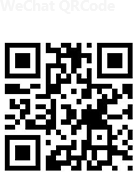-
 +86 0755-89302056
+86 0755-89302056 -
 Building 6, Jingneng science and technology environmental protection industrial park, No. 3, Baolong Second Road, Longgang District
Building 6, Jingneng science and technology environmental protection industrial park, No. 3, Baolong Second Road, Longgang District
Application of laser welding technology equipment in lithium battery industry 2
5. Power battery module and pack welding
The series and parallel connection between power batteries is generally completed by welding the connecting piece to the single battery. The materials of the positive and negative electrodes are different, generally copper and aluminum. Since copper and aluminum form a brittle compound after laser welding, they cannot to meet the usage requirements, in addition to ultrasonic welding, copper and copper; aluminum and aluminum are generally laser welded. At the same time, because both copper and aluminum conduct heat very quickly and have very high laser reflectivity, and the thickness of the connecting piece is relatively large, a higher-power laser is required to achieve welding.
Features of laser welding lithium batteries:
From the manufacture of lithium battery cells to the assembly of battery packs, welding is a very important manufacturing process. The conductivity, strength, air tightness, metal fatigue and corrosion resistance of lithium batteries are typical battery welding quality evaluation standards. . The selection of welding methods and welding processes will directly affect the cost, quality, safety and consistency of the battery. Laser welding has become the preferred solution for many welding tasks due to its advantages such as safe and reliable welding, precision technology, and environmental protection.
Analysis of the development status of lithium battery industry
1. Development of lithium battery industry
After more than ten years of development, China's lithium battery industry has established a complete industrial chain including lithium ore mining, material supply, battery cells and PACK, and battery recycling. Driven by downstream market demand, the lithium battery industry's output scale has maintained rapid growth, growing from 17.2 Gwh in 2012 to 88.7 Gwh in 2017. In five years, output has increased fourfold.
Electric vehicles (mostly new energy vehicles), 3C digital, and energy storage industries are the three major driving forces for the development of the lithium battery industry. In 2016, new energy vehicles surpassed 3C Digital with a demand of 30.8 GWh, becoming the largest consumer market for lithium batteries. By 2017, power battery production increased to 44.5 GWh. Energy storage batteries have huge development potential, but due to technology, policy and other reasons, they are still in the market introduction stage and are relatively lagging behind power batteries. In the future, as technology matures, the energy storage market will also become another pole driving lithium battery consumption.
2. Development of new energy vehicles and power battery industry
As the global energy crisis and environmental pollution problems become increasingly prominent, industrial energy conservation and environmental protection development have been highly valued, and new energy vehicles have experienced explosive growth. Production increased from 12,600 vehicles in 2012 to 794,000 vehicles in 2017, with a compound annual growth rate of 99. 4%. In 2017, the production and sales were 794,000 vehicles and 777,000 vehicles respectively, a year-on-year increase of 53.6% and 53.3% respectively. The year-on-year growth rates of production and sales increased by 2.1 and 0.3 percentage points respectively. In 2017, new energy vehicles accounted for 2.7% of the market, an increase of 0.7% from the previous year. 9 percentage points. China has surpassed the United States to become the world's largest new energy vehicle market, with production and sales ranking first in the world for three consecutive years.
As the core component of new energy vehicles, the development of power batteries follows the overall market trend of new energy vehicles. The power battery market is also showing an explosive development trend. The large influx of capital has led to a substantial increase in power battery production.
Laser welding application market analysis--lithium battery
In 2017, China's automotive power battery production reached 44.5Gwh, a year-on-year increase of 45%. OFweek predicts that in the next four years, the demand for power batteries will maintain a compound annual growth rate of more than 40%. By 2020, China's demand for new energy vehicle power batteries will exceed 120Gwh.
Tel:+86 0755-89302056
+86 0755-85200585
Address:Building 6, Jingneng science and technology environmental protection industrial park, No.3, Baolong Second Road, Longgang District. Shenzhen.China




